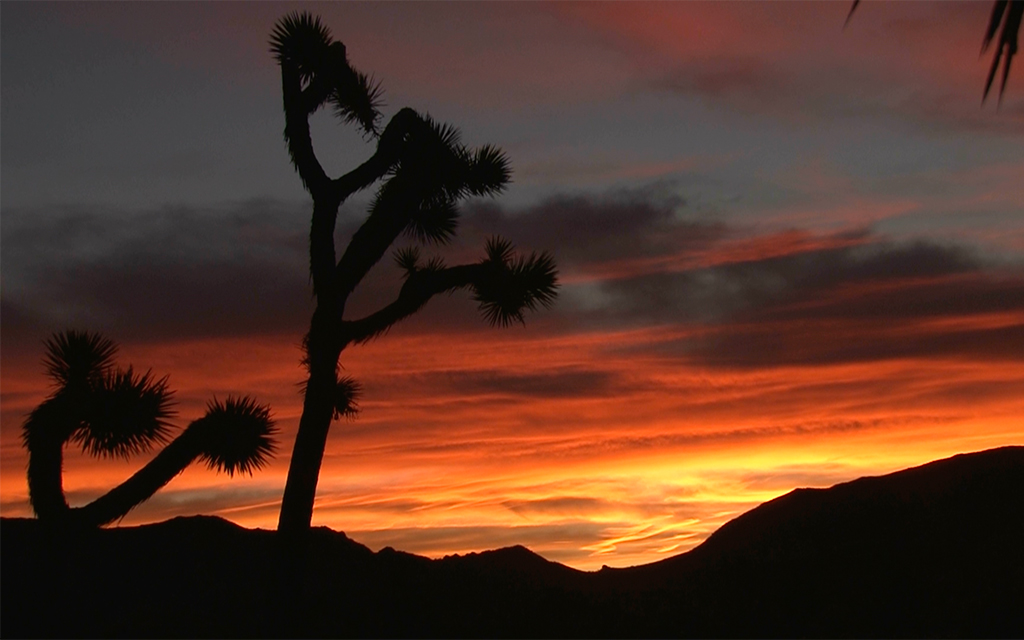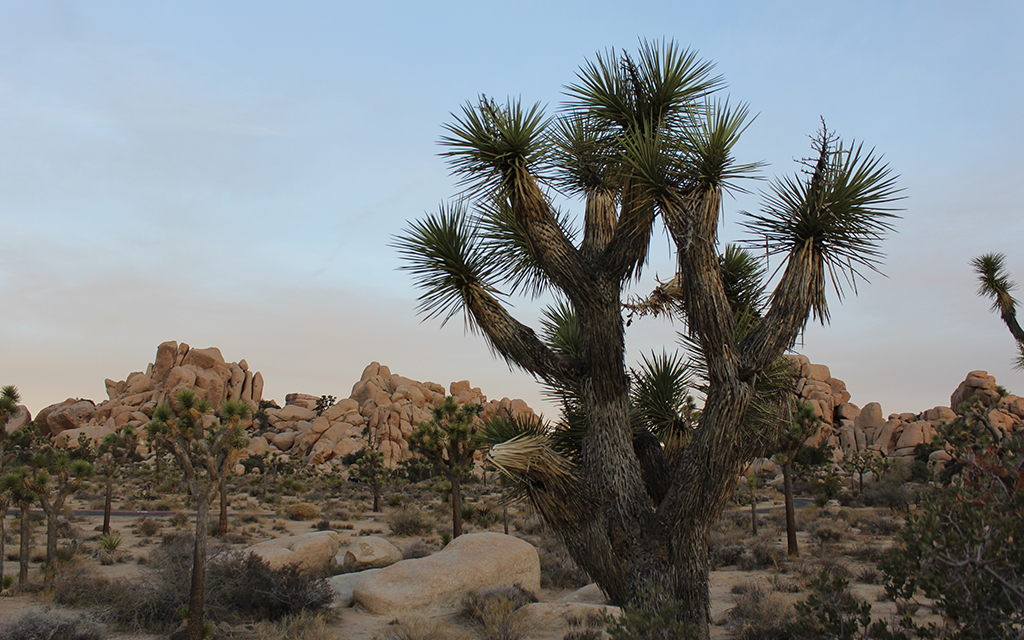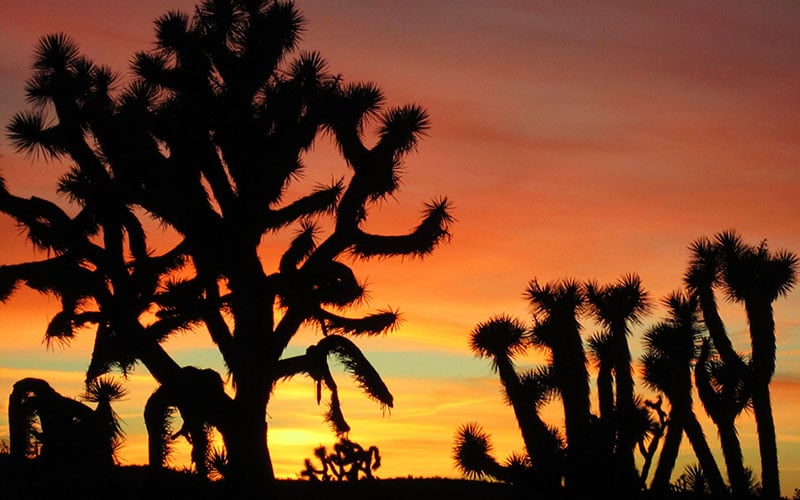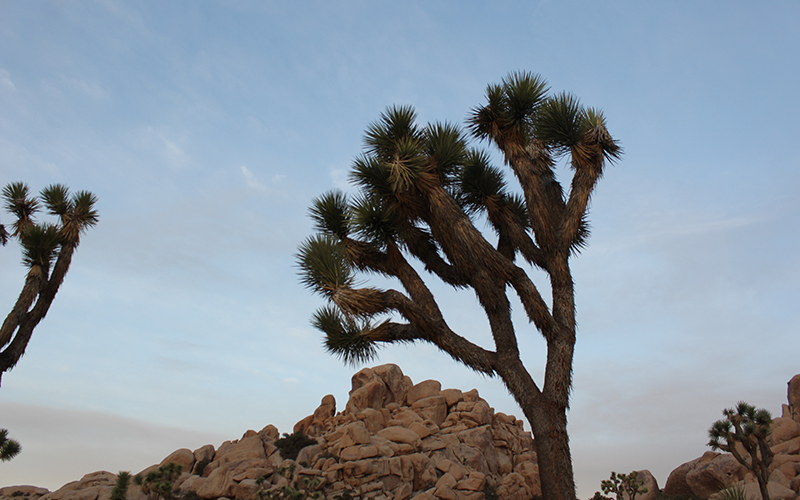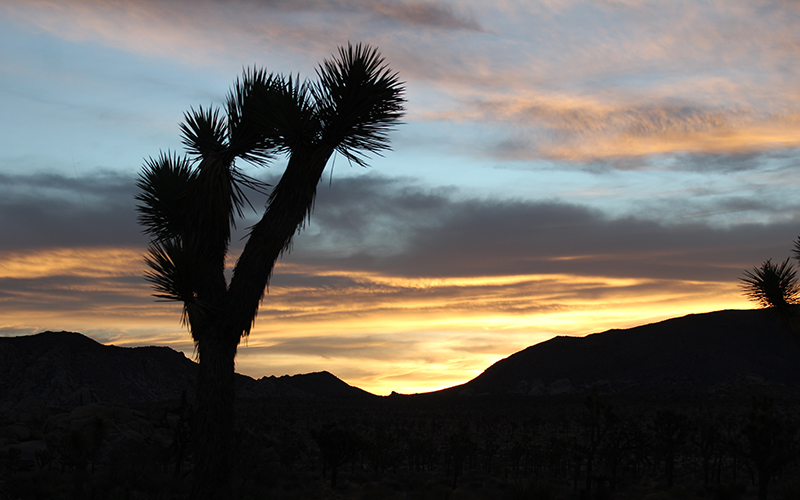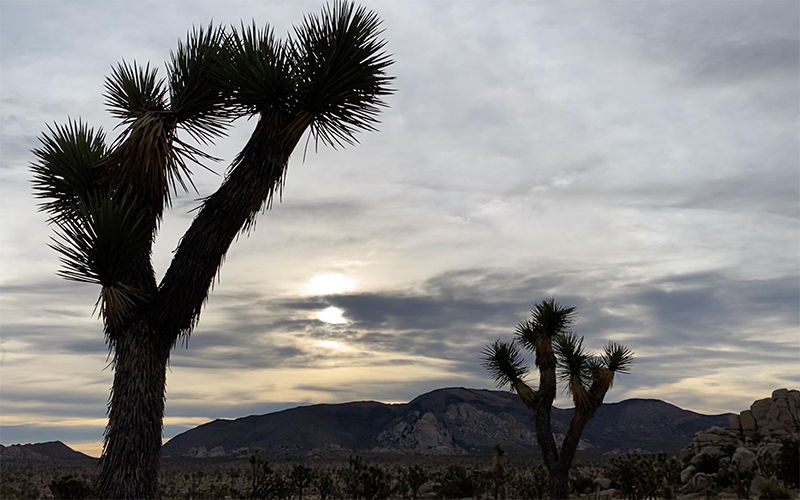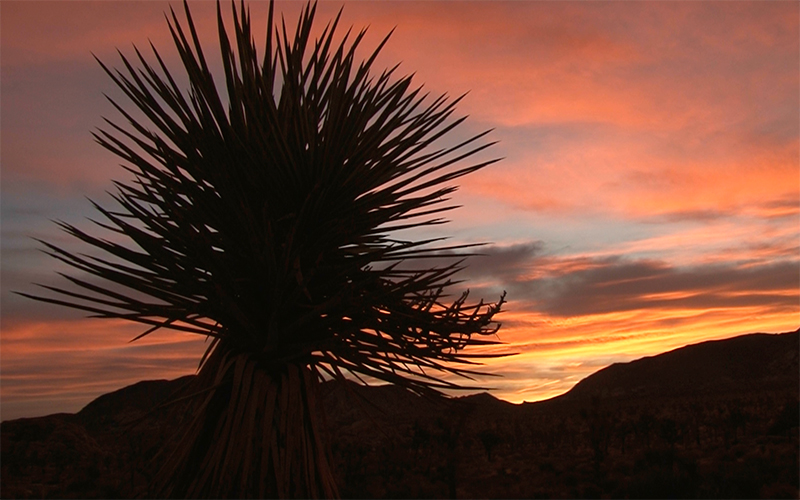Preservation and persistence
Western Joshua trees, which range from southwestern Nevada to Southern California, have a main stem with branches that make the plant appear more treelike. The Eastern Joshua tree, which is found in Arizona, Nevada, Utah and parts of Southern California, is multistemmed and more bushlike.
Western Joshuas have been studied more than their Eastern relatives, so experts have more compelling evidence that Western Joshuas are threatened by climate change, experts say.
The trees face multiple threats: increased mortality from higher temperatures and dried-out soil; struggles with reproduction; and wildfires torching the desert landscape.
Joshua trees propagate from seeds, producing thousands each year under the right conditions. Cummings said that for every 1,000 Joshua tree seeds, only three or four successfully sprout. The trees only flower in certain years under the right conditions, they require the yucca moth to pollinate the flowers, and then rodents must disperse the seeds without eating them. If all goes well, a rodent chews the fruit, takes the seed and casts it, often under a host plant or shrub.
Humans are working to augment mother nature’s efforts, too. Researchers at the Joshua Tree Genome Project are working to plant and assess seedlings – taking the plant’s future out of the hands of chance, they hope.
Like the redwood forests and sequoias further north, Joshua trees also face the threat of fire. An increase in invasive grasses from the Mediterranean and Europe in the Mojave Desert over the past century has brought plants like the Sahara mustard to the region. The grasses thrive in hotter climates and provide a fuel bed that increases fire size and intensity, Rodgers said.
In 1999, a fire burned 11,000 acres at Joshua Tree National Park, which gave scientists a better understanding of how yucca brevifolia react to fire. The park has had several smaller fires since, and remains on high fire alert almost year-round. Other large fires across the desert have set Joshua trees ablaze, including last year’s Dome Fire that burned more than 42,000 acres in the Mojave National Preserve along the Nevada-California state line.
“We already had concerns coming into this last decade looking at climate change,” Rodgers said. “We already had worries about fire burning through Joshua tree woodlands and destroying them. They’re not adapted to fire, they don’t respond or recover very well. But it’s definitely this extra sort of stressor on top of all that, looking at data that shows an increase in temperatures, as well as possible a decrease in precipitation.”
According to the National Oceanic and Atmospheric Administration, Southern California is receiving about 20% less rain than it did two decades ago. Since the middle of the 20th century, the average desert temperature has risen by just less than 2 degrees.
Joshua Tree National Park is committed to understanding where Joshua trees could survive under future climate scenarios and ensure that they can continue to persist.
“We’re actually creating firebreaks, we’re working and collaborating with Conservation Corps,” Rodgers said. “Members and crews are coming in and actually clearing out nonnative vegetation, creating these fuel breaks. So when we have a fire we can quickly get in there and put it out.
“Being on the edge of their range here means there’s something about this edge, this zone that is limiting or restricting how far out they grow and reproduce and become established. Because they’re already kind of on the edge of their range, they’re already limitations due to available moisture, temperature range. So their vulnerability is not a surprise when it comes to looking at climate change,” Rodgers said.

Threats to the Joshua tree's survival include higher temperatures and dried-out soil, struggles with reproduction and wildfires torching the desert landscape.
Another threat the Joshua tree faces comes from land development at a time when high urban housing prices and the COVID-19 pandemic have resulted in new residents, as the Los Angeles Times has reported.
Cummings said one of the twisted ironies of the Joshua tree’s fight to survive is that many of the development projects are part of the solution, with solar energy farms being constructed or proposed in regional desert lands. About 40% of the tree’s range is on private land that’s subject to development. Killing or removing a threatened species without authorization is illegal under California law.
Just as the grizzly bear on the state flag is now extinct in California, Joshua trees could become another state symbol that disappears. Cummings is confident it’s not too late for the species, and taking action to protect Joshua trees by reducing greenhouse emissions and changing transport infrastructure and energy production could save them.
“The Joshua tree is on the verge of becoming an international icon on our failure to address climate change,” Cumming said. “But the appreciation that people have for this truly iconic species can instead be translated into making the Joshua tree a symbol of society successfully taking action to address climate change, doing what’s necessary to protect biodiversity in an age of extinction and runaway climate change.”
In April 2022, the California Department of Fish and Wildlife will release its status review and analysis on the state of the Joshua tree and determine whether it will receive permanent protections under the California Endangered Species Act.
